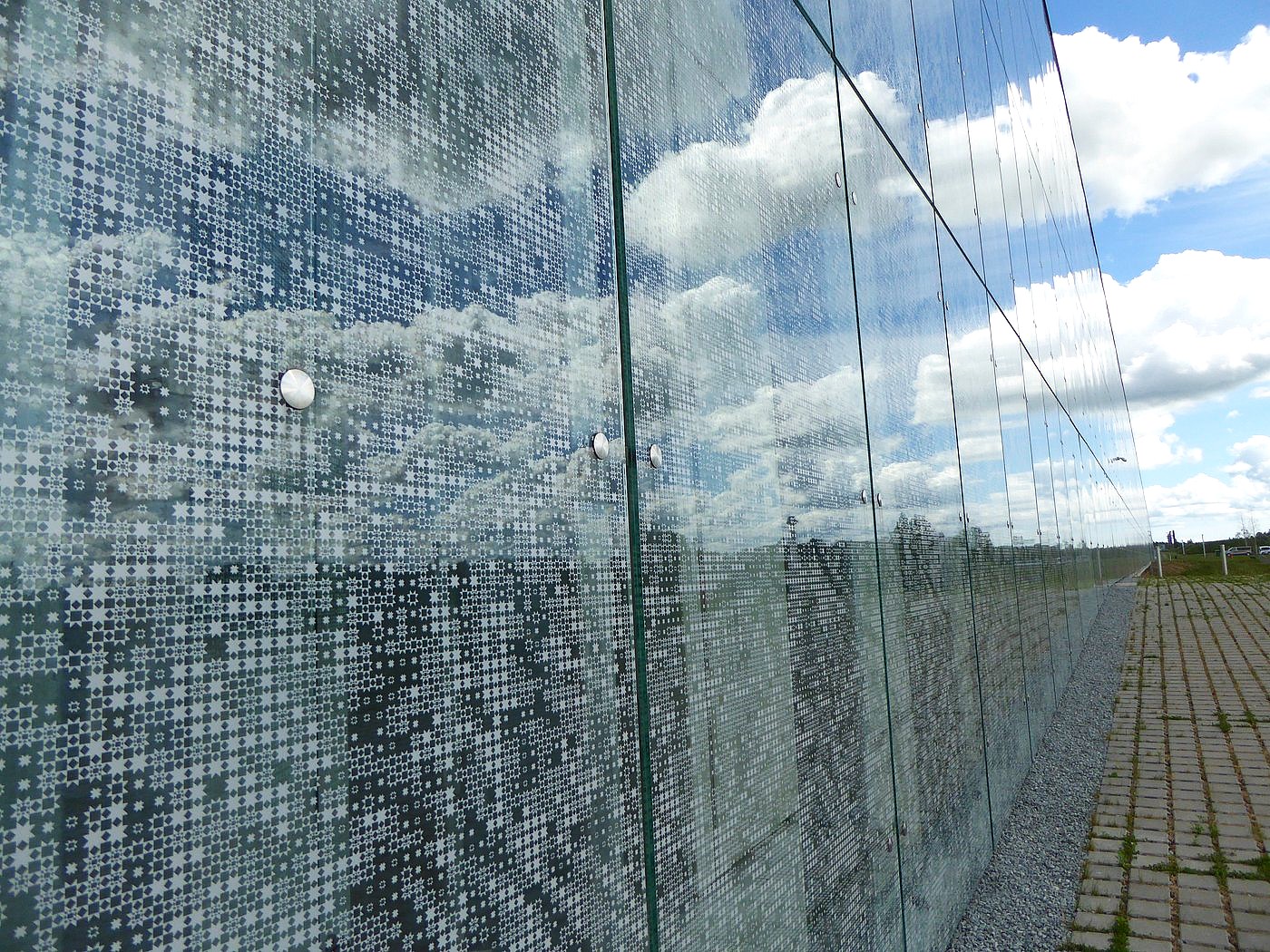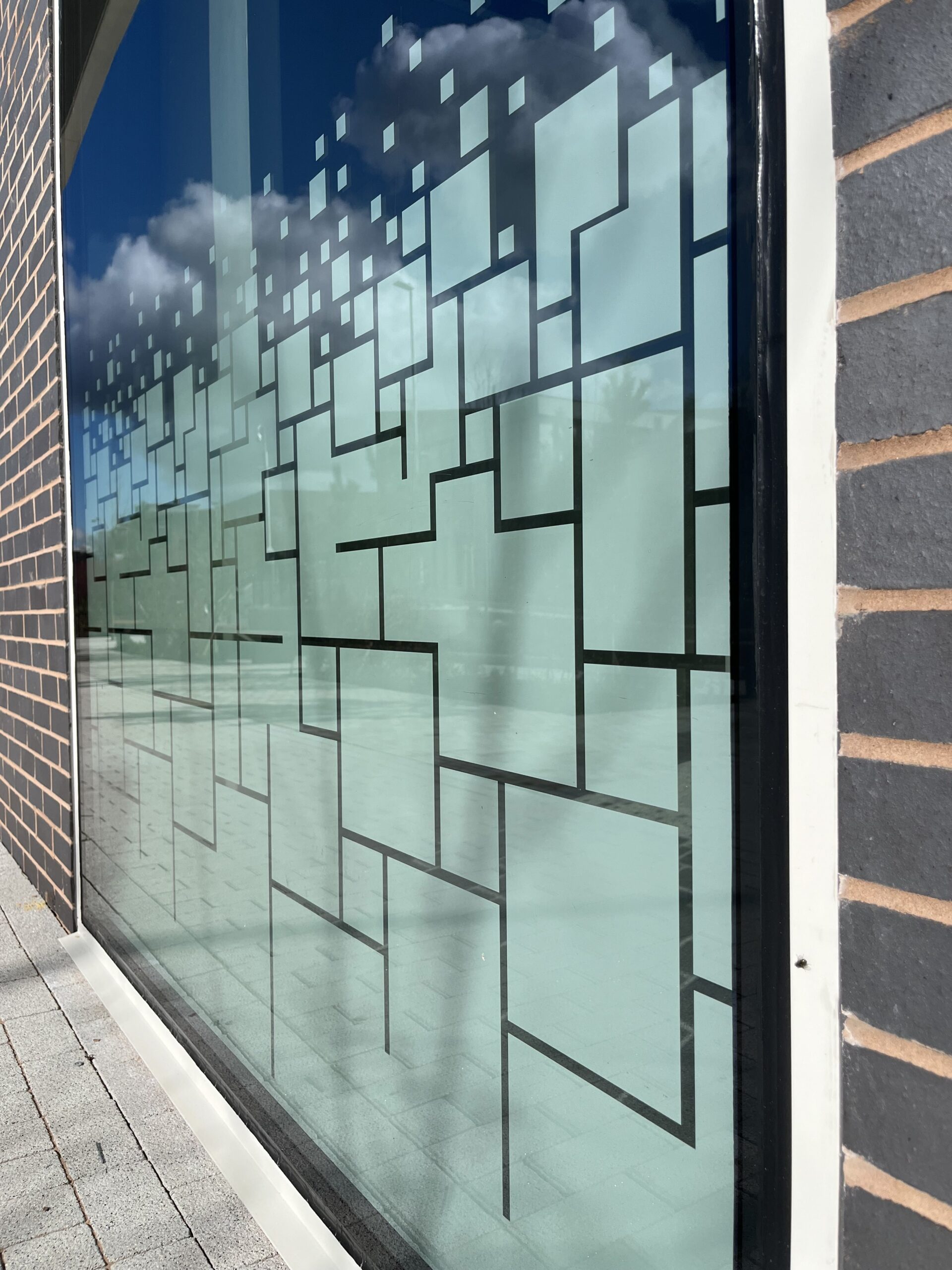When it comes to glass decoration, two primary techniques—silk screening and digital printing—stand out as the most common glass printing methods. Each method has its strengths and weaknesses, making it essential to choose the right one based on your project’s requirements. In this article, we will compare these two techniques, highlighting their advantages and disadvantages to help you make an informed decision.
Silk Screening: The Traditional and Durable Choice
Silk screening is a well-established method where ink is pushed through a specifically designed fabric stencil onto the glass surface. The printed glass is then tempered, making it highly resistant to weather conditions and mechanical damage.
Advantages of Silk Screening:
–Thicker Ink Layers for a Premium Look: Silk screening applies thicker ink layers than digital printing, resulting in richer, more opaque colors and a high-quality finish that enhances the visual appeal.
–Consistency in Large Batches: Once the screen is set up, every print is identical, making it ideal for bulk production.
-Vibrant Colors on Dark Surfaces: This method provides strong, solid colors that stand out, even on tinted glass.
Disadvantages of Silk Screening:
–Limited Color Options: Silk screening is best suited for single solid colors. Achieving gradients or complex shading is challenging.
–High Initial Setup Costs: Creating the stencil requires time and investment, making it less economical for small projects.
–One Design Per Batch: Changes in design require a completely new stencil, adding to costs and production time.
Glass Specifications for Silk Screening at Glassense:
- Maximum Size: 2000 x 4000 mm
- Minimum Size: 200 x 400 mm
- Glass Thickness: 4 mm to 15 mm

Digital printing: The Modern and Versatile Option
Digital printing uses advanced digital printing technology, allowing for high-resolution images and complex designs to be printed directly onto the glass using ceramic ink. This method combines the precision of digital technology with the durability of ceramic-based ink.
Advantages of Digital printing:
-Unlimited Color Options: Uses CMYK technology, enabling full-color prints, gradients, and intricate details.
-High Resolution: Achieves up to 720 dpi (Glassense printer max), producing crisp, clear images with fine details.
-Fast and Flexible: Perfect for projects with frequent design changes or personalized elements.
Disadvantages of Digital printing:
–Higher Cost per Unit for Large Orders: Unlike silk screening, digital printing does not become significantly cheaper with increased quantity.
-Slight Variability in Color Matching: Digital prints may appear slightly different from on-screen previews due to the nature of ceramic ink application.
-Less Vibrant on Dark Surfaces: While digital printing excels in detail, it may not achieve the same opacity as silk screening on darker glass.
Glass Specifications for Digital printing at Glassense:
- Maximum Size: 3210 x 6000 mm
- Minimum Size: 200 x 400 mm
- Glass Thickness: 4 mm to 15 mm

Which Method Should You Choose?
Your choice between Silk Screening and Digital printing depends on your project’s needs:
Choose Silk Screening if:
-You require large quantities with consistent designs.
-You need a highly durable and weather-resistant print.
-You prefer bold, solid colors without intricate gradients.
Choose Digital printing if:
-You want detailed, high-resolution prints with multiple colors and gradients.
-You need flexibility in design changes and personalization.
-You have a smaller order and want to avoid high setup costs.
Final Thoughts
Both silk screening and digital printing offer unique advantages depending on the application. While silk screening is perfect for large-scale, durable prints with solid colors, digital printing provides unmatched flexibility and detail for smaller, high-quality projects. At Glassense, we offer both solutions, ensuring you get the best possible print for your glass applications. Contact us today to discuss your project and find the best printing method for your needs!

